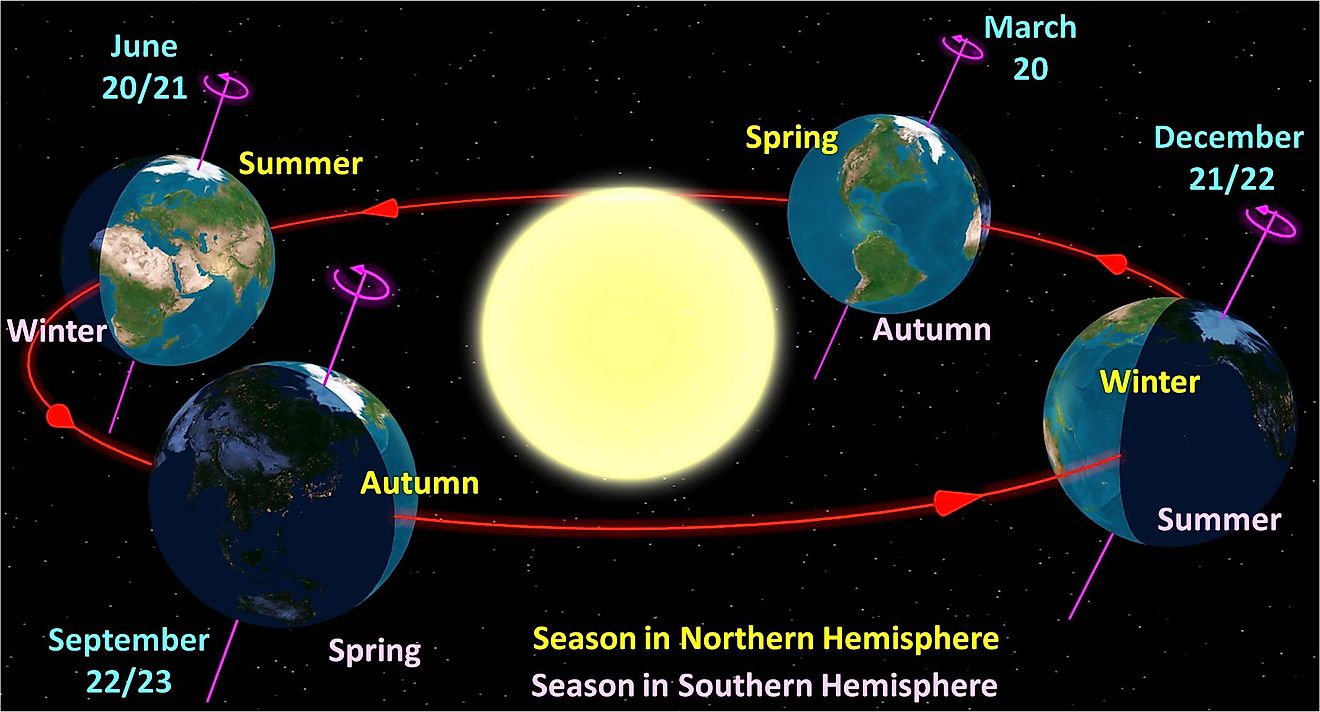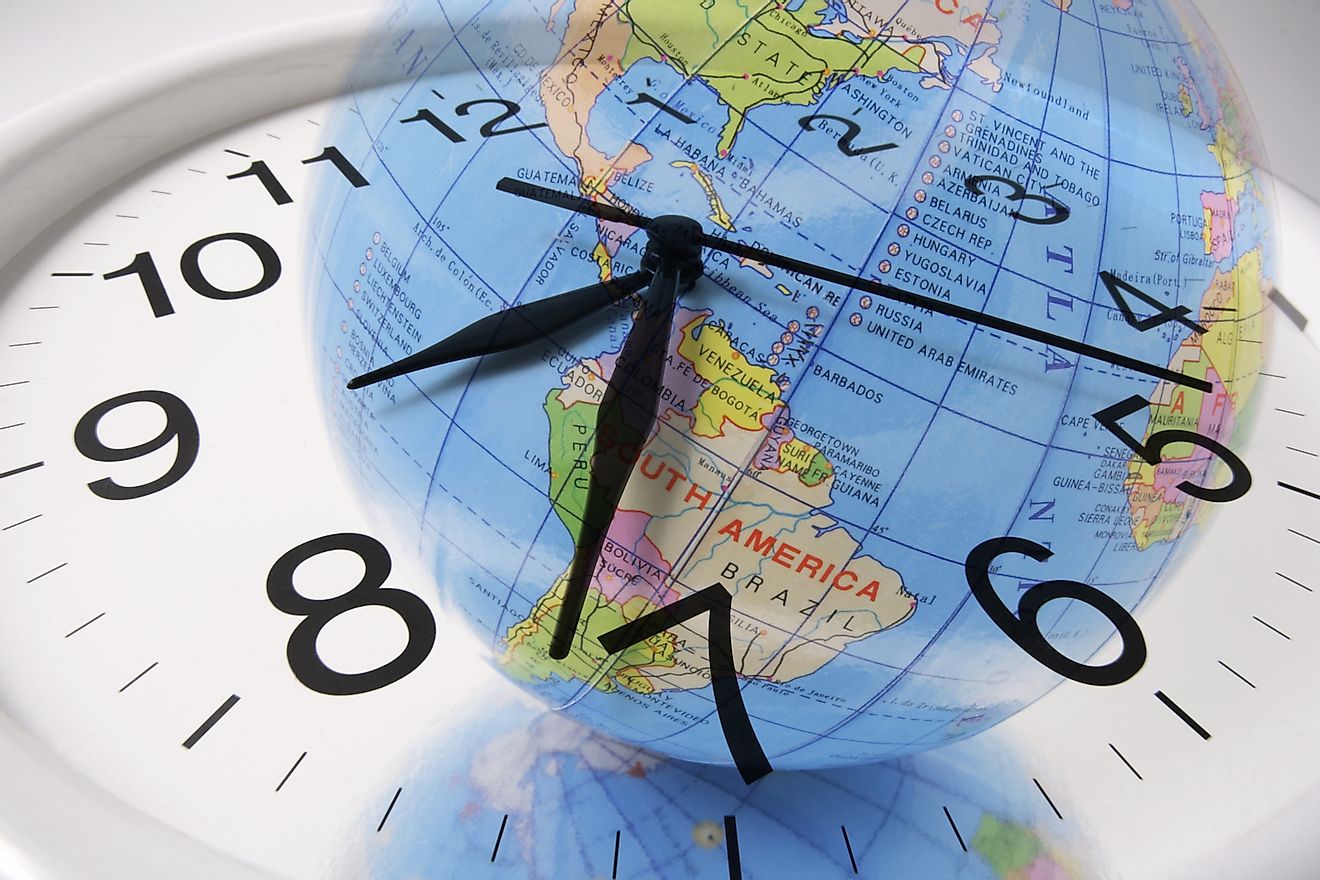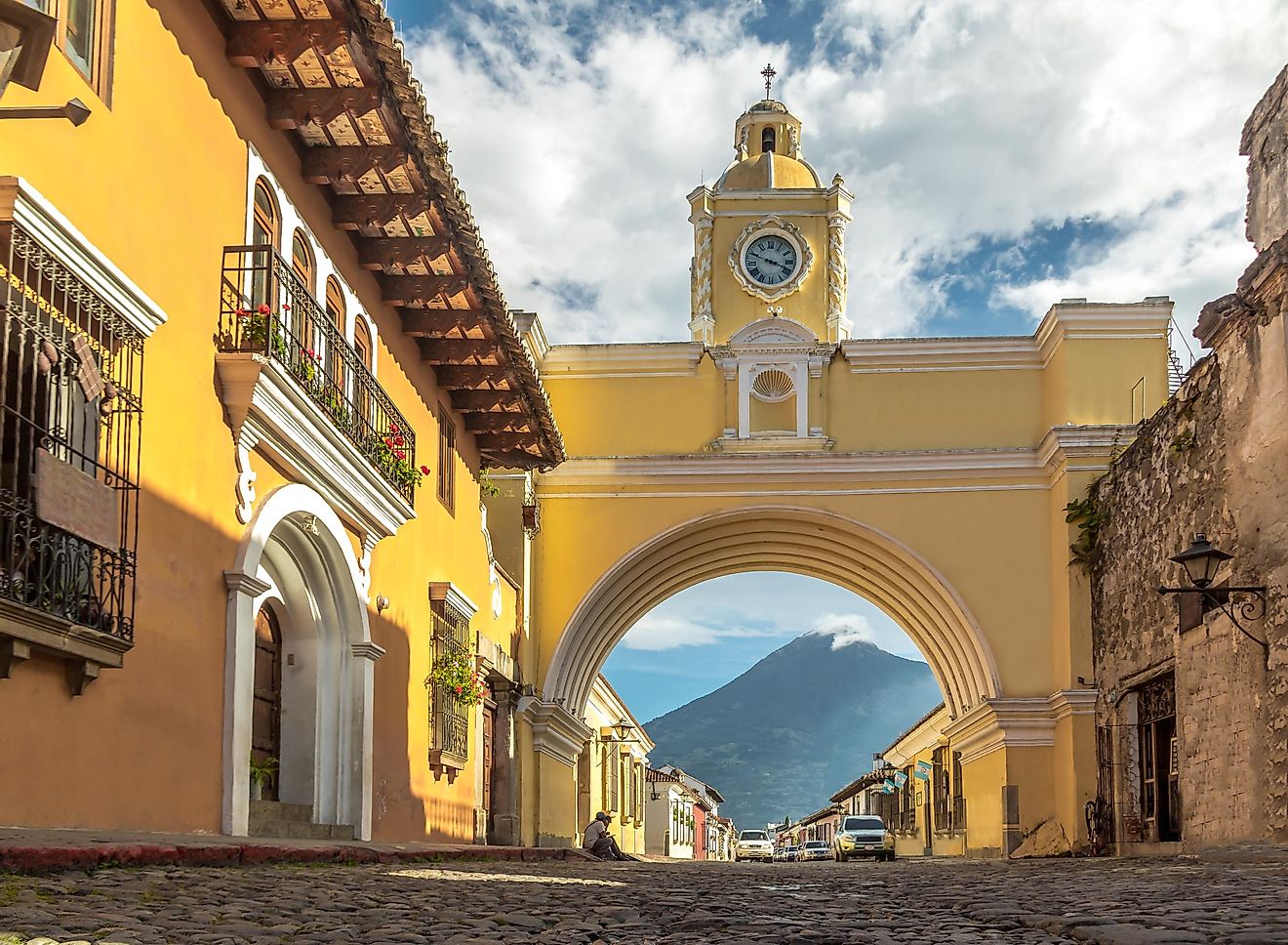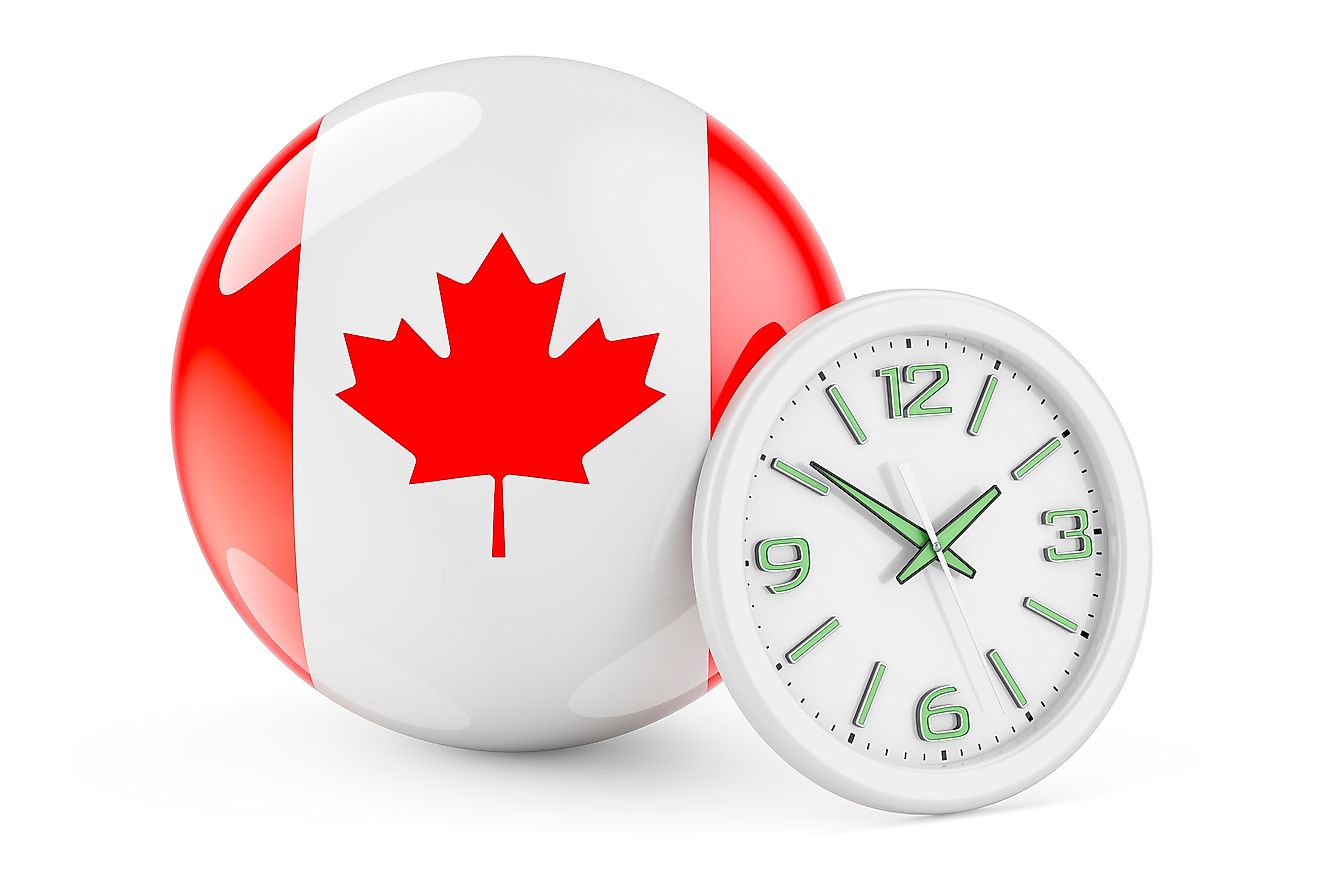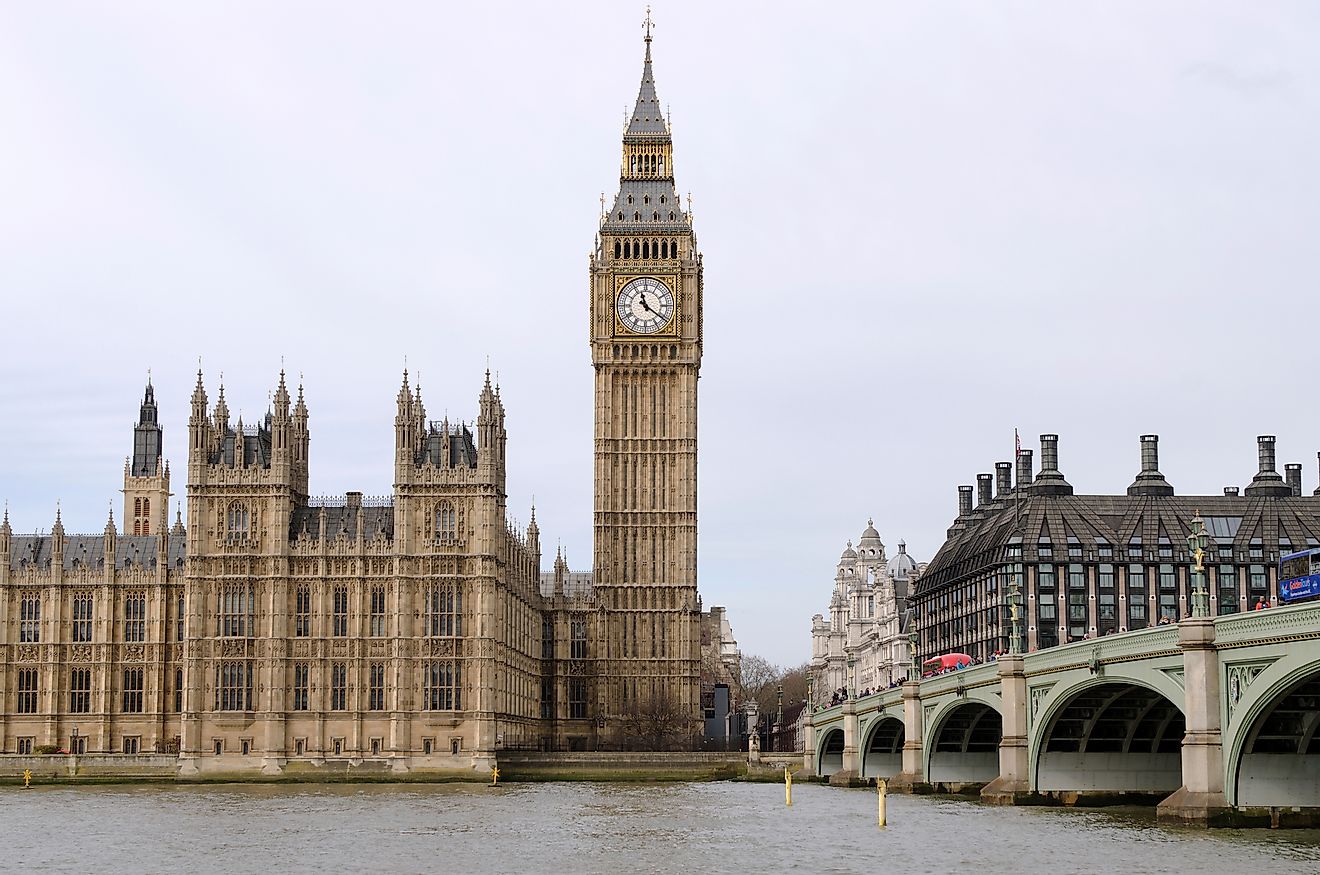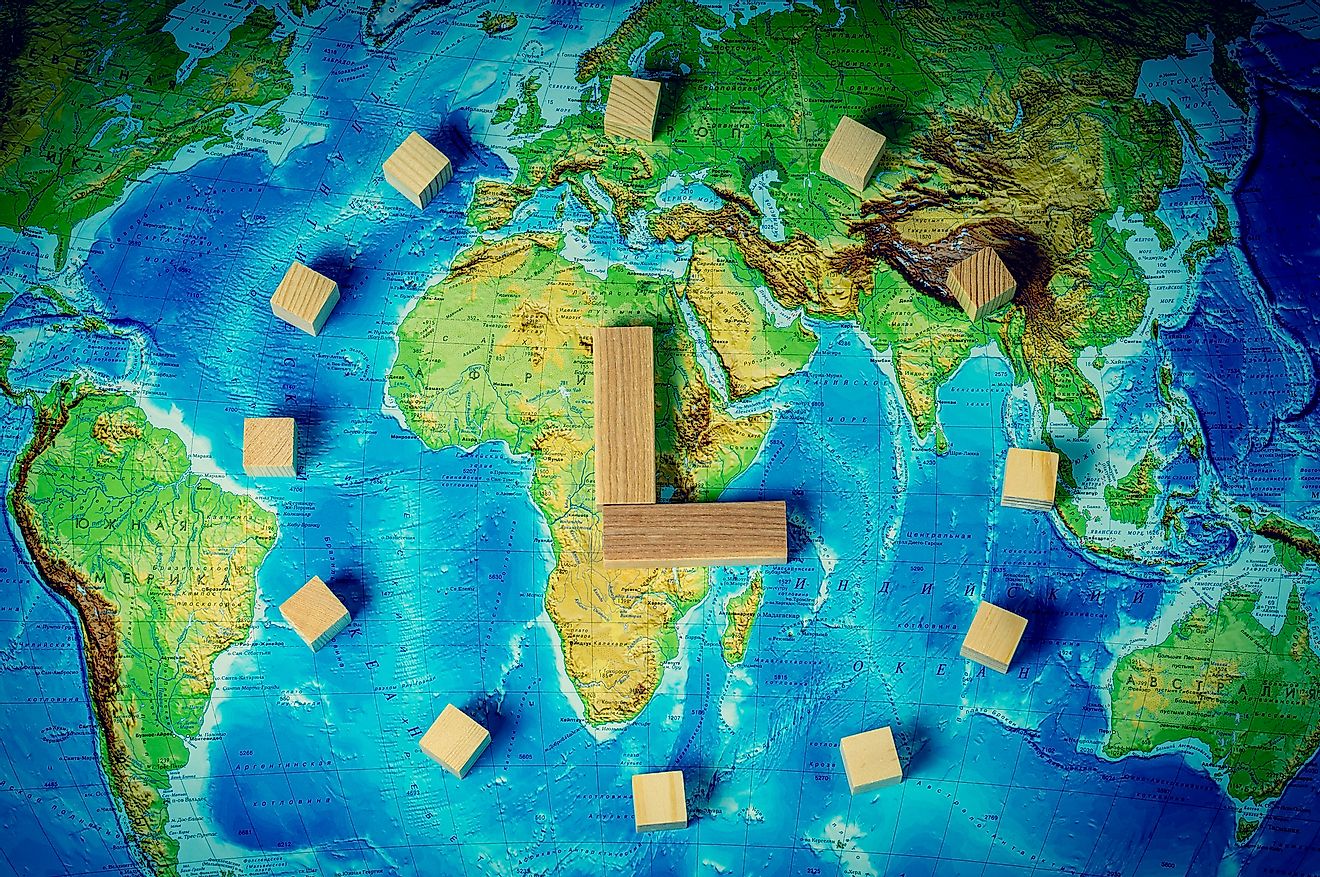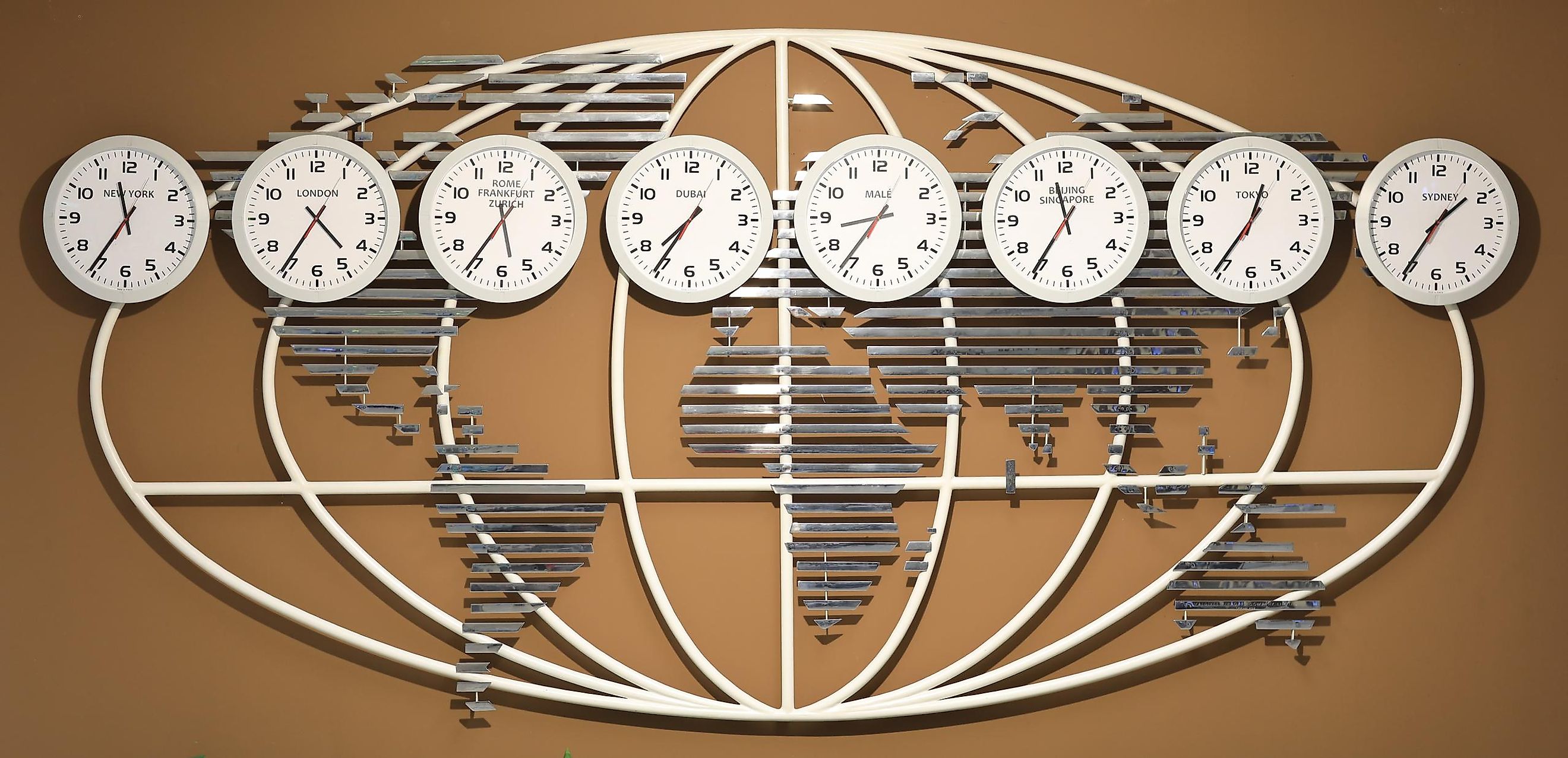
10 Countries With The Most Time Zones
The world is enormous and, notably, not flat. If the Earth were flat, as it appears on most rectangular maps, 'time' would be a much simpler matter. Instead, the sun lights up a huge portion of whichever side of the Earth faces it, leaving the opposing side in darkness. How humanity divides time is based on Coordinated Universal Time (UTC) which ranges from UTC:-12:00 in the west to UTC+14:00 in the east, although the divisions between the 24 zones are not geometrically arranged and are based on need and are subject to change, especially in instances regarding the common practice of daylight savings. Greenwich Mean Time (GMT) and UTC are interchangeably used because they have no difference. The following countries are exceptional examples of nations that have spread so far and wide, typically by latitude, as to occupy several time zones.
1. France - 13

The colossal French Empire spanned the globe until it amassed a total area of over 3.9 million square kilometers. This expansion largely occurred during the 16th and 17th centuries until it reached the peak of its power around 1680. Today, fragments of French territory exist all over the world, leaving it with a whopping 13 time zones to consider. At UTC-10:00, for example, three sets of islands (Society Islands, Austral Islands, Tuamotus) are administrated by France, which makes them one of the last places to welcome in the new year. For reference, UTC-12 is the farthest west a time zone can reach. From there, French time zones steadily move east. Today, France has a total area of over 244 thousand square miles which pales in comparison to a country like Russia, but because of how spread out it is, there is no shortage of time zones.
2. Russia - 11
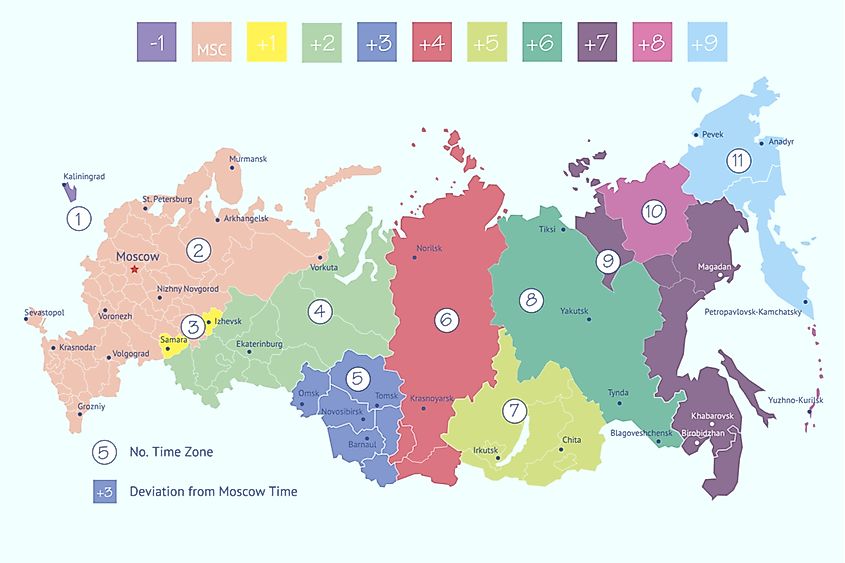
At 6.6 million square miles, Russia is staggeringly large, and it bares a significant width that possesses 11 time zones. Interestingly, Kaliningrad Oblast is one of the only separated Russian territories that exist over 200 miles away from Russia Central. In the past, the Soviet Union and the Russian Empires also occupied regions like the US state of Alaska, but that era has ended. However, recent expansionist attempts by the Russian government into areas like Ukraine and Georgia indicate that more time zones could be added to Russia in the future, although the ongoing Ukraine effort is currently not in the Russian favor. Whether or not international governing bodies would acknowledge territorial acquisition by force is a question only the future can answer. For now, Russia must be satisfied with its 11 time zones.
2. The United States - 11
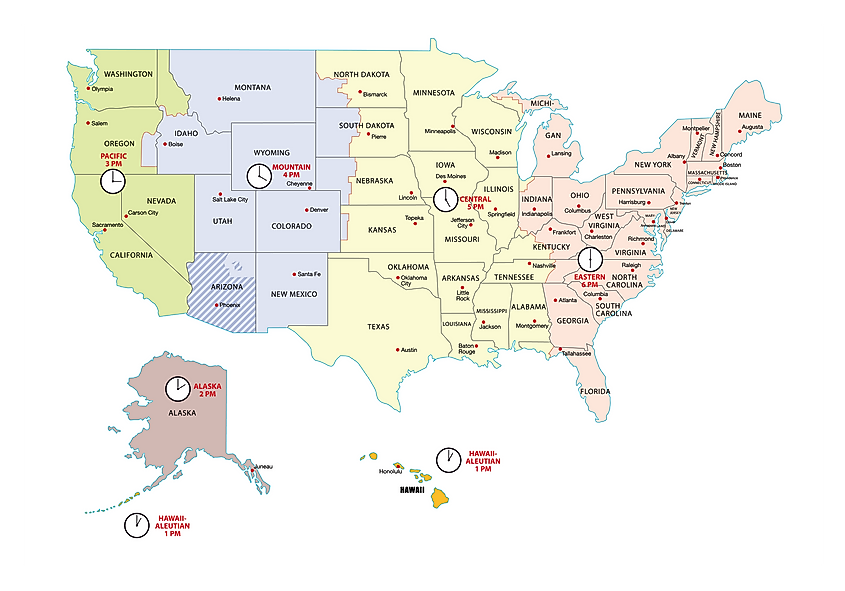
Although the United States began as a colony, it never became known as a colonial empire despite its occupation of foreign regions during the last century. Most of those occupations began and ended after the disturbance of the World Wars, but places like Puerto Rico, Guam, and Hawaii (which is now a state) were certainly inhabited by societies before the US acquisition. Regardless, US-occupied islands in the Pacific, like Baker Island and Howland Island, sit at UTC-12:00 while Wake Island is at UTC+12:00, despite their 'close' proximity. The US mainland covers four time zones, thanks to its 2,680-mile width, and Alaska and Hawaii have respective time zones of their own. So, between the five zones found in the Pacific Ocean, the five on continental America, and the last zone around the Caribbean, the United States possesses a remarkable 11 time zones.
4. Australia - 9
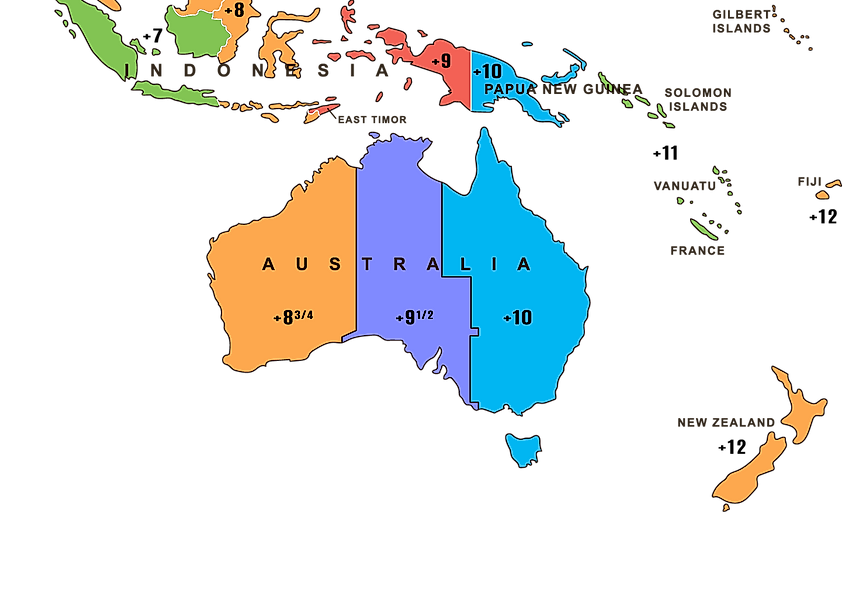
The Land Down Under is situated on a surprising breadth of territory, not including its mainland. Humans have settled in mainland Australia for nearly 50 thousand years, and more recently, British settlers established control of the continent in 1788. The settlers were convicts, which was part of a long-term pattern that Britain had for making use of imprisoned populations. Gradually, the country of Australia formed, and over time it claimed a handful of the nearby islands. Some of those territories include Heard and Mcdonald Islands, which operate around UTC+05:00, Christmas Island at UTC+07:00, and Norfolk Island at UTC+11:00. The mainland of Australia operates zones between UTC+08:00 and UTC+10:00. It is common to forget that Tasmania is a landmass separated from the southern tip of Australia, but is still a state, as well as its adjacent Flinders Island and King Island.
4. The United Kingdom - 9
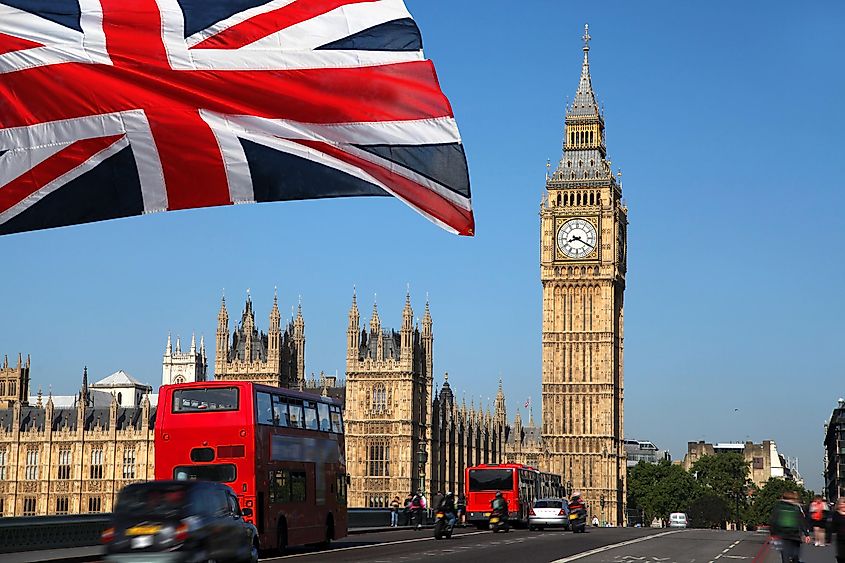
Once upon a time, The United Kingdom dominated the entire Earth through a vast array of colonies protected by its powerful navy. In the early 1920s, the British Empire covered a surface area of 13.5 million square miles and held a total population of 413 million people. With Canada's independence and the loss of regions like South Africa and others, the United Kingdom is now limited to around 94 thousand square miles. Still, nine time zones are nothing to scoff at, and they range from the Pitcairn Islands at UTC-08:00 to British Indian Ocean Territory at UTC+06:00. In between those two extremes are the Cayman Islands, Bermuda, Gibraltar, and several other British-owned regions. Notably, the main United Kingdom Territory surrounding London is in the UTC±00:00 time zone at the center of the world due to the history of GMT/UTC as a navigational shipping tool.
6. Canada - 6

Next in line is the former British territory, Canada, which only gained independence in April of 1982. This fracturing of the British Empire, which had slowly been separating since its peak in 1920, brought along with it the multitude of time zones that the North American frontier possessed. At its most western point, Canada relies on UTC-08:00 to manage daily scheduling in British Columbia, Tungsten, and Yukon. Quebec sits farther east and relies on UTC-05:00, but two more time zones separate Canada from the Atlantic Ocean, in New Brunswick and Newfoundland. One of the confusing aspects of time zones in Canada, the United States, and elsewhere is a transition from winter clocks to summer clocks every year. Some regions, like Blanc-Sablon, operate on a consistent all-year clock. Many, and perhaps most, operate on a switching clock that is part of the complicated daylight savings adjustment. Essentially, a region like Manitoba will be UTC-6:00 during the winter, and UTC-5:00 in the summer.
7. Denmark - 5
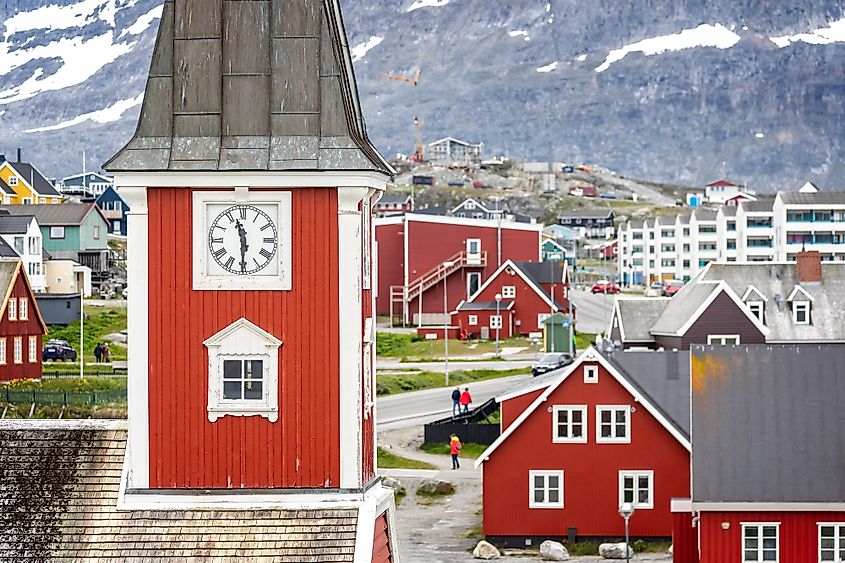
Five time zones exist throughout Denmark, even though it seems small in comparison to its neighbors, Norway and Sweden. However, many people forget that the grand tundra of Greenland is a part of the Kingdom of Denmark due to its relative autonomy. Therefore, the frozen village of Pituffik operates at UTC-04:00, and the main territory of Denmark operates at UTC+01:00. In between the two are three more time zones within Greenland, although the majority of the landmass operates at UTC-03:00. Time is a bit of a flippant concept when one travels close to the arctic circle, however. In the summer, there are periods when the sky never becomes dark, and in the winter, the sun can disappear entirely for months at a time. Time zones become a critical part of communicating and maintaining a sense of balance for the brave adventurers and scientists stationed there.
8. New Zealand - 5
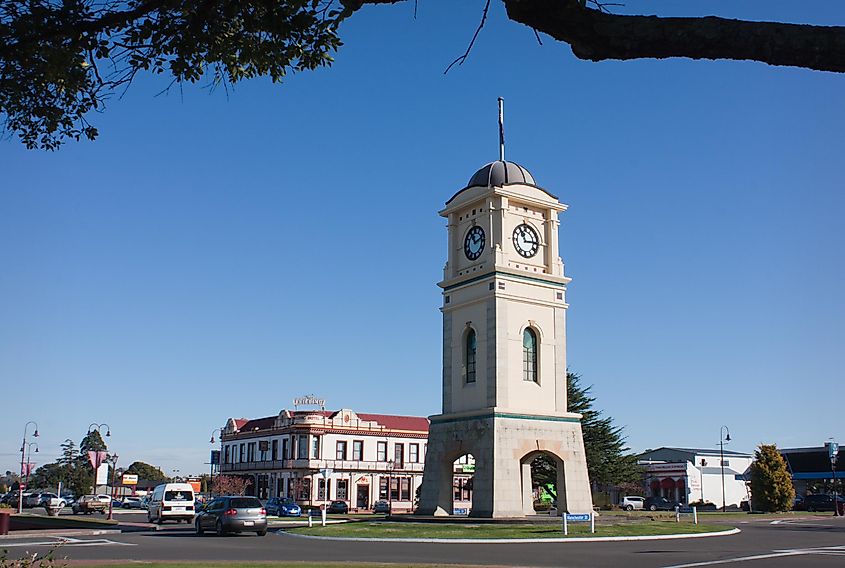
Between New Zealand's islands of Niue and Tokelau, the dividing line for UTC cuts somewhat arbitrarily. In truth, relative to the inhabitants, they might as well admit that they are experiencing the 'same day' rather than having a 24-hour difference, justified by 700 miles of longitude separation. This dividing line could have been decided between Colorado and Kansas or Austria and Hungary, but the original council of 1884 decided that the Pacific was the best location to avoid global frustration. New Zealand's three other time zones are situated in its main territory, the Cook Islands and the Chatham Islands.
9. Brazil - 4

Just by the sheer size and the assimilation of adjacent islands, Brazil uses four time zones. Its easternmost zone is UTC-02:00, around the Rocas Atoll and Saint Peter and Saint Paul Archipelago. To the west, the legendary Amazonas territory is on UTC-05:00. This segment of the world is formed of an indomitable jungle that stretches endless miles in all directions. This breadth also reaches the next large segment that is part of UTC-04:00, and the southeastern region of Brazil is governed by UTC-03:00.
9. Mexico - 4
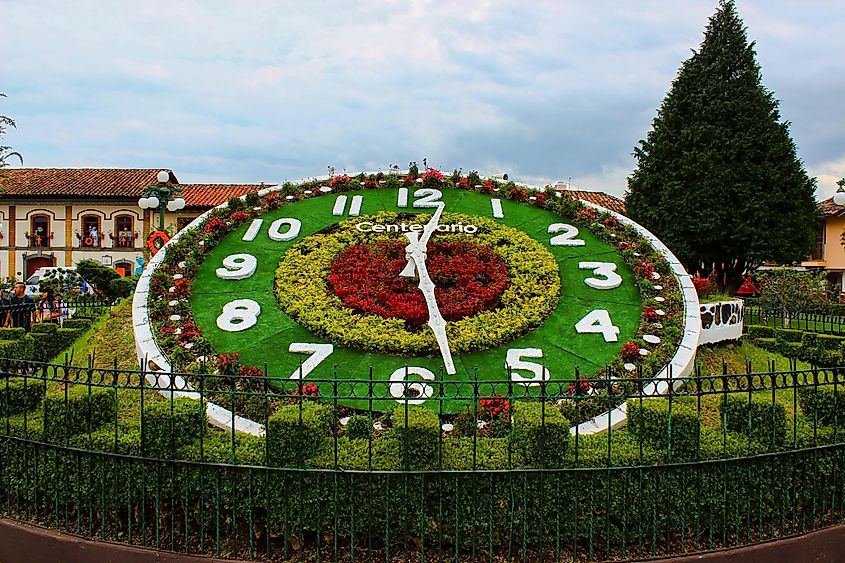
Like Brazil, Mexico also uses four time zones. The country stretches between the longitudes 86° and 119°W and occupies an area of 1,972,550 sq. km. Located on the Yucatan Peninsula's eastern part, the state of Quintana Roo uses UTC-05:00. The states of Baja California Sur, Nayarit, Sonora, Sinaloa, and some municipalities of Chihuahua have UTC-07:00. UTC-08:00 works for Baja California while the rest of Mexico used UTC-06:00.
The industry that the modern world depends on operates like clockwork, and that clockwork is dysfunctional without pre-agreed time zones. If two colleagues are separated by a great distance, a timely remote meeting can still be arranged by checking the exact time it is elsewhere, which is only possible because of the standardization of UTC zones. Furthermore, if Earth only had a single zone, communication would be stunted for those unable to understand when daylight and night are occurring elsewhere. Midnight would be breakfast for some, and 4 pm would be pitch dark for others. However, as countries typically conduct the most business and interaction internally, it is fascinating when a single landmass occupies several time zones. China is unique in that it is easily large enough to have several but chooses to use only one, Beijing time. Ultimately, the concept of time zones is intended to make daily life smoother, which it certainly accomplishes.
Countries With More Than One Time Zone
| Country | No. of time zones |
|---|---|
| France | 13 |
| Russia | 11 |
| United States | 11 |
| Australia | 9 |
| United Kingdom | 9 |
| Canada | 6 |
| Denmark | 5 |
| New Zealand | 5 |
| Brazil | 4 |
| Mexico | 4 |
| Chile | 3 |
| Indonesia | 3 |
| Kiribati | 3 |
| Democratic Republic of the Congo | 2 |
| Ecuador | 2 |
| Federated States of Micronesia | 2 |
| Kazakhstan | 2 |
| Kingdom of the Netherlands | 2 |
| Mongolia | 2 |
| Papua New Guinea | 2 |
| Portugal | 2 |
| South Africa | 2 |
| Spain | 2 |
